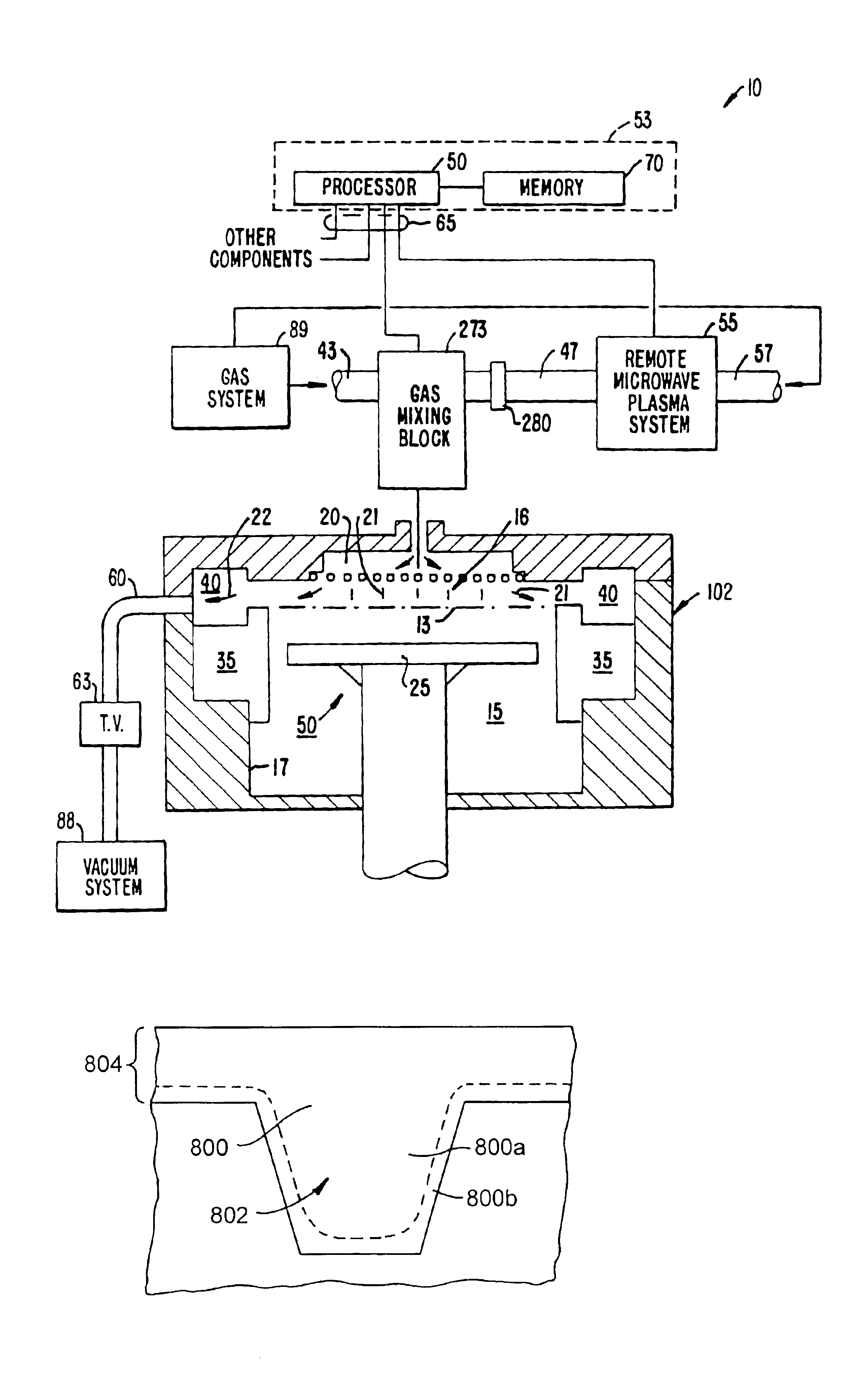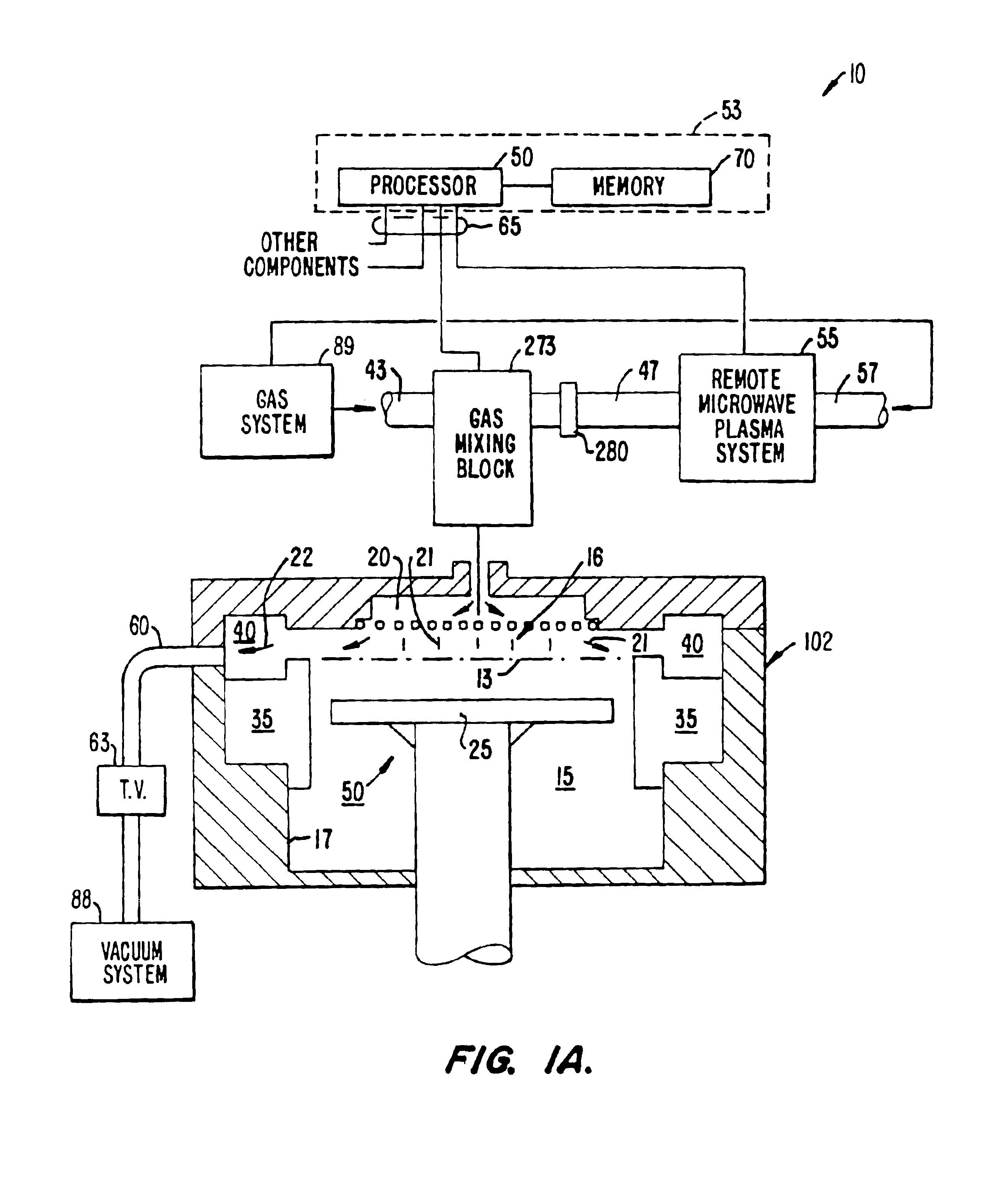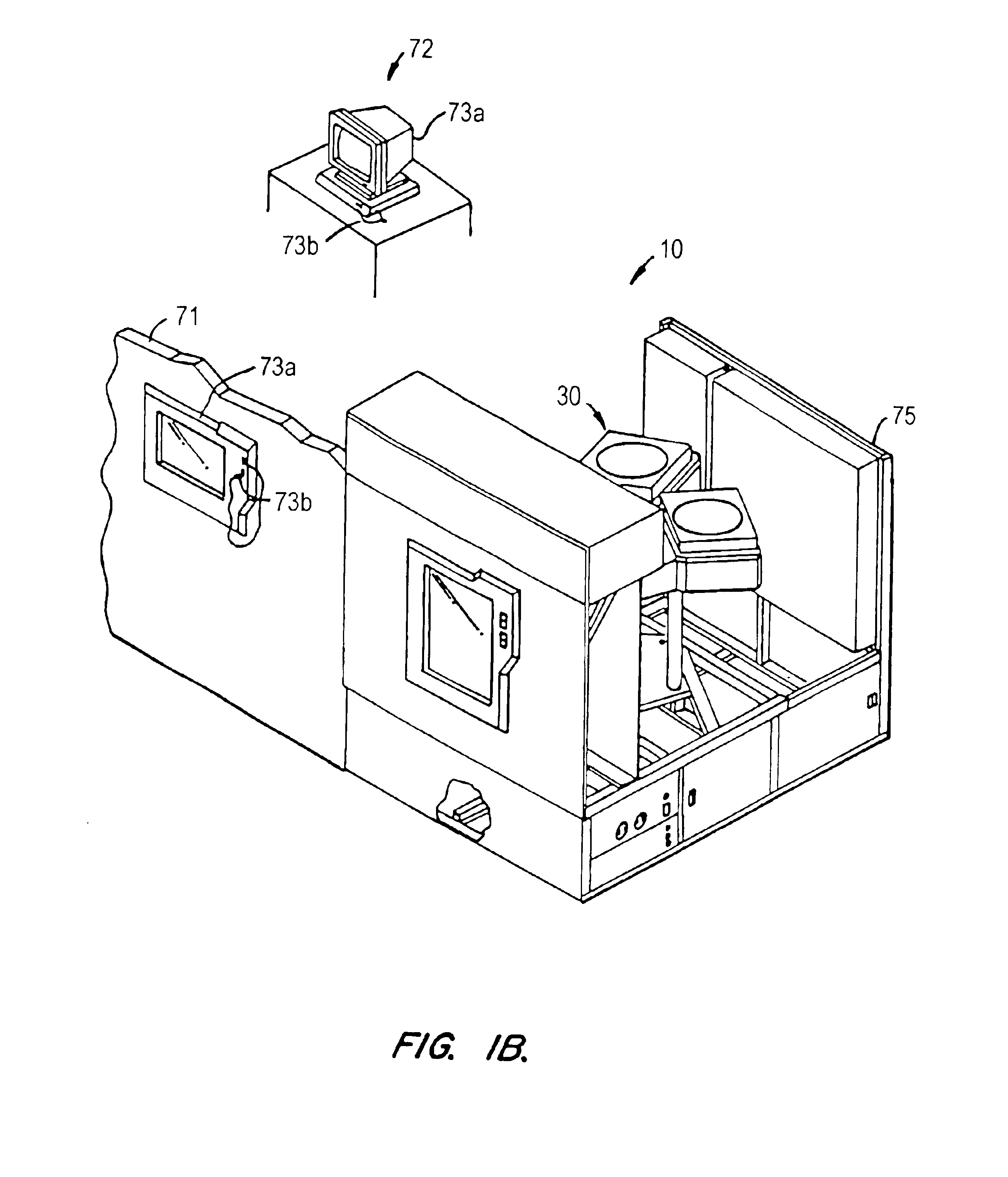Method using TEOS ramp-up during TEOS/ozone CVD for improved gap-fill
a technology of ozone and teos, which is applied in the direction of coatings, chemical vapor deposition coatings, semiconductor devices, etc., can solve the problems of high operating power consumption, more likely that the void will not be filled, and the topology of the pattern can interfere with or degrade subsequent wafer processing, etc., to achieve good gap-filling properties, increase the ratio of silicon-containing gas to oxidizing gas, and high throughput
- Summary
- Abstract
- Description
- Claims
- Application Information
AI Technical Summary
Benefits of technology
Problems solved by technology
Method used
Image
Examples
Embodiment Construction
[0026]The present invention provides methods and apparatuses related to chemical vapor deposition of silicon oxide. In one embodiment, a single-step deposition process is used to efficiently form a silicon oxide layer exhibiting good gap-filling properties with high throughput. The silicon oxide layer is initially formed under conditions including a relatively low ratio of silicon-containing gas:oxidizing gas. As the CVD process step continues, the ratio of silicon-containing gas:ozone is increased. As a result of these changed processing conditions, silicon oxide of a highly conformal character is formed relatively slowly during initial stages of the deposition process step, with less conformal oxide formed more rapidly during later stages, thereby allowing for high throughput.
[0027]For purposes of this application, the term “deposition step” refers to a period of continuous flow of a silicon-containing gas to a processing chamber. The term “stage” refers to a portion of a depositi...
PUM
| Property | Measurement | Unit |
|---|---|---|
| temperatures | aaaaa | aaaaa |
| flow rate | aaaaa | aaaaa |
| time | aaaaa | aaaaa |
Abstract
Description
Claims
Application Information
 Login to View More
Login to View More - R&D
- Intellectual Property
- Life Sciences
- Materials
- Tech Scout
- Unparalleled Data Quality
- Higher Quality Content
- 60% Fewer Hallucinations
Browse by: Latest US Patents, China's latest patents, Technical Efficacy Thesaurus, Application Domain, Technology Topic, Popular Technical Reports.
© 2025 PatSnap. All rights reserved.Legal|Privacy policy|Modern Slavery Act Transparency Statement|Sitemap|About US| Contact US: help@patsnap.com



